Love it or hate it, New Wave has returned disguised as classic rock…and looks like it’s here to stay.
Music trends come and go. And often they come back again. Such is the case with New Wave, the genre that enjoyed a brief but notable heyday from the late-1970s to the late-1980s. A less-angry and more artistic offshoot of punk rock, New Wave was radio-friendly (remember radio?) and, at its height, helped launch the age of the music video. It was heavy on synthesizers, driving guitar and tinny percussion, light on traditional lyric structure. It ushered in a “second” British Invasion and launched the careers of several American rock superstars who are still making music today. And then, almost overnight, New Wave blipped out of existence, overtaken by an onslaught of grunge, rap, hip-hop, hair metal and electronic dance music—with many of its stars reemerging later on the alternative rock charts.
For tens of millions of Americans—most past 50 and many pushing 60—New Wave was the music they grew up on. It’s their classic rock, their comfort food. And, yes, you’re starting to hear those old riffs sampled in hip-hop tunes and in ads and played in the aisles of supermarkets and retail stores. It has its own Sirius XM channel and it’s probably just a matter of time until big pharma starts co-opting New Wave tunes for their drug commercials. Perhaps not surprisingly, the genre, which was the last sold primarily as vinyl, is also being rediscovered by hipsters, teens and tweens—often at the gentle urging of their parents or (yikes!) grandparents.
Alas, it would seem that we wrote off New Wave a bit prematurely. Turns out it was more than a pop-music flash in the pan. Its reemergence and staying power are testaments to the artistry and innovation of its creators. Who were they and where are they now? Here’s a look at ten of the best…
Blondie 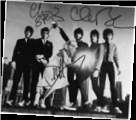
Way Back When…
Jersey Girl Deborah Harry and Brooklynite Chris Stein assembled Blondie in 1974 and ascended quickly to the vanguard of the New Wave movement. The band was popular abroad and in the dank music clubs of the East Village until their third album, Parallel Lines, blew up and made them bona fide superstars.
Big Hits
Heart of Glass, Call Me & The Tide Is High
Where Are They Now?
Blondie took a break in the early 1980s so that Stein could recover from a debilitating autoimmune disease, with Harry continuing to record as a solo artist. By the end of the decade, the pair had broken up as a couple. But Blondie re-formed in the late-1990s and produced the album No Exit, albeit to a lukewarm response. They continued to record and perform in the 2000s and were inducted into the Rock & Roll Hall of Fame in 2006. Harry and Stein announced a tour set to start in the spring of 2022, but the 72-year-old Stein ultimately stepped aside with heart issues.
The B-52s 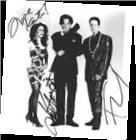
Way Back When…
The B-52s embraced a humorous, 1950s “trash-culture” ethos, with a mix of wacky lyrics and retro keyboard work. Kate Pierson and Fred Schneider handled vocals, while Ricky Wilson provided some memorable guitar licks.
Big Hits
Rock Lobster and Love Shack
Where Are They Now?
Although the B-52’s have toured more or less consistently—and put out new albums in 1992 and 2008—the band’s popularity faded in the mid-1980s following Wilson’s death from AIDS. They enjoyed a brief resurgence during the music-video boom with “Love Shack.” With Schneider and Pierson now both in their 70s, a farewell tour has been scheduled to begin later this summer.
The Cars 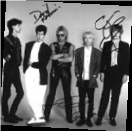
Way Back When…
The Cars were at the forefront of New Wave’s calling card of guitar licks plus heavy synthesizer, releasing their first album in 1978. Ric Ocasek, on guitar and vocals, had a unique look that proved ideal for the MTV generation. The Cars won Video of the Year award at the very first MTV Video Music Awards in 1984. Their strong, minimalist style powered multiple hits during the decade.
Big Hits
Just What I Needed, Shake It Up & You Might Think
Where Are They Now?
After the band broke up in the late-1980s, Ocasek married super-model Paulina Porizkova, who had appeared in a Cars video when she was 18. The couple was estranged in 2019 when she found him dead in their still-shared New York City brownstone at the age of 75, from heart disease. The band had been inducted into the Rock & Roll Hall of Fame the previous year. Cars bassist Benjamin Orr, who shared lead vocals with Ocasek on several hits—including “Just What I Needed”—passed away from pancreatic cancer in 2000.
Elvis Costello 
Way Back When…
After cutting his teeth as a pub-rock punk artist in the early 1970s, Costello made a splash in the early days of New Wave with My Aim Is True. He formed a band called The Attractions and pumped out a string of albums produced by Nick Lowe, including This Year’s Model, Armed Forces and Almost Blue—which demonstrated the depth and breadth of his talent and are still top-sellers today.
Big Hits
Alison, Angels Wanna Wear My Red Shoes & Pump It Up
Where Is He Now?
Costello became one of the most in-demand musical collaborators of his time, pairing with everyone from Paul McCartney to Burt Bacharach to Annie Lennox, and also demonstrated his acting skill in several film and television appearances. In 2003, Elvis Costello & The Attractions were inducted into the Rock & Roll Hall of Fame. He married chanteuse Diana Krall that same year and had twin boys.
Duran Duran 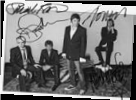
Way Back When…
The darlings of MTV in the network’s infancy, Duran Duran featured singer Simon Le Bon, bassist John Taylor, drummer Roger Talyor and keyboardist Nick Rhodes. They were one of the first bands to shoot their videos on 35 mm film and collaborate with established moviemakers. They won the first Grammy for Best Music Video in 1984 and rode their success to perform the title song to the 1985 007 film A View to a Kill.
Big Hits
Rio & Hungry Like the Wolf
Where Are They Now?
Constant reshuffling saw Duran Duran’s popularity ebb by the end of the 1980s. They continued to make music in the 1990s and experienced a resurgence in popularity in the 2000s, selling out show after show on tour in the US and UK. In 2012, they headlined at the Summer Olympics opening ceremony in London and in 2021 released the studio album Future Past to great fanfare.
Eurythmics 
Way Back When…
Annie Lennox and Dave Stewart broke off from The Tourists in 1981 to form Eurythmics, which blended electronic and psychedelic influences to produce a form of avant- garde pop that was utterly unique. After turning out their first album, Lennox suffered a nervous breakdown and Stewart nearly died from a collapsed lung. They recovered to produce Sweet Dreams, a huge success that also showcased Lennox as a music-video star.
Big Hits
Sweet Dreams (Are Made of This) & Would I Lie to You
Where Are They Now?
After issuing eight albums in eight years, Lennox and Stewart took a break for a decade to work on individual projects. They reunited in 1999 to record another album and appeared together sporadically thereafter, often as part of fundraising and tribute concerts. In 2019, Lennox released her eighth solo record, Lepidoptera.
The Police 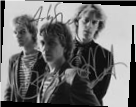
Way Back When…
What an interesting trio these guys were: Sting (trained as a teacher), Stewart Copeland (grew up in Beirut) and Andy Summers (a 35-year-old jazz guitarist) found one another in 1977 and formed the core of The Police. After making several top-selling albums on the international scene, the British band became New Wave megastars in America with the release of Synchronicity—their fifth and final studio album before breaking up in 1986.
Big Hits
Roxanne, Don’t Stand So Close to Me & Every Breath You Take
Where Are They Now?
The three key members of The Police decided to do their own things, and each continued to thrive. Sting sold millions of records as a solo artist and dabbled in acting—most recently in Only Murders In the Building, playing (and poking fun at) himself. Copeland, a transformative rock drummer, became a prolific composer of film scores and has written ballets and operas. Summers also turned out film scores—including Down and Out In Beverly Hills and Weekend at Bernie’s—and recorded a string of acclaimed jazz albums. Following their Hall of Fame induction in 2003, a reunion tour in 2007 sold out countless arenas.
The Pretenders 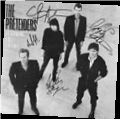
Way Back When…
Ohio-born Chrissie Hynde and Englishman Jimmy Honeyman-Scott blended their distinctly different musical styles to form the heart of The Pretenders in 1979. Hynde named the band after the Platters’ iconic hit “The Great Pretender.” They bowled over critics and developed an intensely loyal fan following, but the band was devasted in 1982 when Honeyman-Scott died of a cocaine overdose at age 25.
Big Hits
Don’t Get Me Wrong, Brass In Pocket & I’ll Stand by You
Where Are They Now?
Hynde reconstituted the band several times over, touring consistently and producing roughly one studio album per decade, including 2020’s Hate for Sale, which received a thumbs-up from fans and critics. In 2005, The Pretenders were inducted into the Rock & Roll Hall of Fame.
Talking Heads 
Way Back When…
Even when New Wave was new, Talking Heads were recognized as pioneers, blending punk, funk and world music into a dizzying array of hit songs and albums during a remarkable 16-year run that ended when the band broke up in the early 1990s. David Byrne, Tina Weymouth, Jerry Harrison and Chris Frantz explored percussion in its many forms and elevated winking, ironic lyrics to an art form—not surprising, as they all first met while art students in the early 1970s. Their 1984 film Stop Making Sense, directed by Jonathan Demme, is one of the most watchable concert movies of the 20th century.
Big Hits
Psycho Killer, Burning Down the House & Once in a Lifetime
Where Are They Now?
While his three bandmates toured in the 1990s without him as Shrunken Heads (!), David Byrne continued to make clever, sophisticated music and encouraged other musicians to remember that without “art” there is no artist. Among the performers that credit Talking Heads as a major influence are Vampire Weekend, Kesha, St. Vincent, Trent Reznor, Franz Ferdinand, Eddie Vedder, LCD Soundsystem and Radiohead, which actually took its name from one of the band’s 1980s songs. In 2019, Byrne starred on Broadway in American Utopia, which featured reimagined versions of several Talking Heads classics.
Tears for Fears 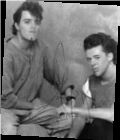
Way Back When…
Formed in the English city of Bath in the early 1980s, Tears for Fears was one of the lead bands in the so-called “Second British Invasion.” Band founders Roland Orzabal and Curt Smith were heavily influenced by the electronic music of Gary Numan (“Cars”) and Depeche Mode (“Just Can’t Get Enough”), as well as the lyrics of Peter Gabriel and David Byrne. They scored a pair of #1 hits in the U.S. in the mid-1980s and were huge stars on MTV.
Big Hits
Shout & Everybody Wants to Rule the World
Where Are They Now?
Success and “creative differences” drove Smith and Orzabal apart, leading to a break-up in the early 1990s. They reunited in 2000 and continued to tour and put out new music over the next two decades. In 2021, their album The Tipping Point reached #1 on Billboard’s Alternative chart and Tears for Fears is currently on tour here and in the UK.
Editor’s Note: As a teenager in the 1970s, Mark Stewart stumbled into several claustrophobic East Village clubs, where he was lucky enough to catch Blondie and Talking Heads. He also shared a house with the road manager of Duran Duran. David Byrne and Elvis Costello are still on heavy rotation in his CD player. (Remember CD’s?)





